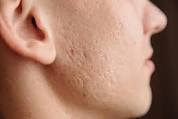Embracing Radiance: Understanding and Addressing White Patches on the Face
The face, often considered the canvas of our identity, is a focal point of expression and connection. Therefore, any noticeable change in its appearance can evoke concern and self-consciousness. White patches on the face, whether small spots or larger areas of depigmentation, can be particularly distressing, prompting individuals to seek answers and solutions. In this comprehensive blog, we'll delve into the world of white patches on the face, exploring their causes, impact, treatment options, and strategies for embracing confidence and radiance.
**Understanding White Patches on the Face:**
White patches on the face, also known as facial hypopigmentation, occur when melanocytes, the cells responsible for producing melanin, either decrease in number or stop functioning correctly. Melanin is the pigment that gives skin its color, and its absence or reduction in certain areas can lead to the development of white or light-colored patches. These patches may vary in size, shape, and distribution and can affect individuals of all ages and skin types.
**Causes of White Patches on the Face:**
Several factors can contribute to the development of white patches on the face, including:
1. **Vitiligo:** Vitiligo is a chronic autoimmune condition characterized by the destruction of melanocytes, leading to the formation of white patches on the skin. While vitiligo can affect any part of the body, it often appears on the face, particularly around the eyes, mouth, and nose.
2. **Tinea Versicolor:** Tinea versicolor is a fungal infection caused by an overgrowth of the yeast Malassezia, which disrupts normal skin pigmentation. This condition can lead to the development of white or light-colored patches on the face, neck, chest, and back.
3. **Post-inflammatory Hypopigmentation:** Post-inflammatory hypopigmentation can occur as a result of inflammation or injury to the skin, such as acne, eczema, or allergic reactions. Inflammatory mediators released during the healing process can interfere with melanocyte function, leading to the formation of white patches.
4. **Pityriasis Alba:** Pityriasis alba is a common skin condition that primarily affects children and adolescents. It is characterized by the development of dry, scaly, hypopigmented patches on the face, particularly the cheeks. The exact cause of pityriasis alba is unknown, but it is believed to be related to eczema or other skin disorders.
**Treatment Options for White Patches on the Face:**
The treatment of white patches on the face depends on the underlying cause and the extent of the condition. Some common treatment options include:
1. **Topical Steroids:** Topical corticosteroids can help reduce inflammation and promote repigmentation in areas affected by vitiligo or post-inflammatory hypopigmentation. These medications are typically applied directly to the affected skin and may require several weeks or months to see results.
2. **Topical Antifungals:** For tinea versicolor, topical antifungal medications such as ketoconazole or selenium sulfide can help eliminate the underlying fungal infection and restore normal skin pigmentation. These medications are applied to the affected areas as directed by a healthcare professional.
3. **Phototherapy:** Phototherapy, or light therapy, involves exposing the skin to ultraviolet (UV) light to stimulate melanocyte activity and promote repigmentation. Narrowband UVB phototherapy is commonly used for vitiligo and other hypopigmentation disorders and may be administered in a dermatologist's office or phototherapy clinic.
4. **Cosmetic Camouflage:** Cosmetic camouflage products such as makeup or self-tanning lotions can help conceal white patches on the face and improve overall appearance. These products provide temporary coverage and can be used as part of a daily skincare routine.
**Coping Strategies and Support:**
Living with white patches on the face can be challenging, both emotionally and psychologically. Coping strategies and support resources can help individuals navigate the impact of facial hypopigmentation, including:
1. **Education and Awareness:** Learning more about the underlying causes and treatment options for white patches on the face can help individuals feel more empowered and informed about their condition.
2. **Open Communication:** Talking openly and honestly with friends, family members, or healthcare providers about feelings and concerns related to facial hypopigmentation can provide valuable emotional support and validation.
3. **Seeking Professional Help:** Consulting with a dermatologist or healthcare professional who specializes in skin disorders can offer personalized treatment options, advice, and support for managing white patches on the face.
4. **Support Groups:** Joining a support group or online community for individuals living with vitiligo or other hypopigmentation disorders can provide a sense of camaraderie, understanding, and encouragement.
**Embracing Confidence and Radiance:**
While white patches on the face may be a source of insecurity for some, it's essential to remember that true beauty radiates from within. Embracing confidence and self-acceptance, regardless of external appearance, is key to living a fulfilling and joyful life. Whether choosing to seek treatment for facial hypopigmentation or embracing one's natural appearance, know that you are worthy of love, acceptance, and respect just as you are. By prioritizing self-care, self-love, and authenticity, individuals can embrace their unique beauty and radiance with confidence and grace.
Conclusion:
Vitiligo is more than just a skin condition; it's a journey marked by resilience, self-discovery, and advocacy. While living with vitiligo may present challenges, it's essential to remember that beauty comes in all shapes, sizes, and colors. By fostering understanding, acceptance, and support, we can create a world where individuals with vitiligo feel empowered to embrace their unique beauty and live their lives to the fullest.
Call now on our Mobile 8669086098 to book an appointment
Kindly visit our website Derma Solutions to know more.
#whitepatches #Vitiligo #TineaVersicolor #Hypopigmentation #treatment_for_white_patches




Comments
Post a Comment